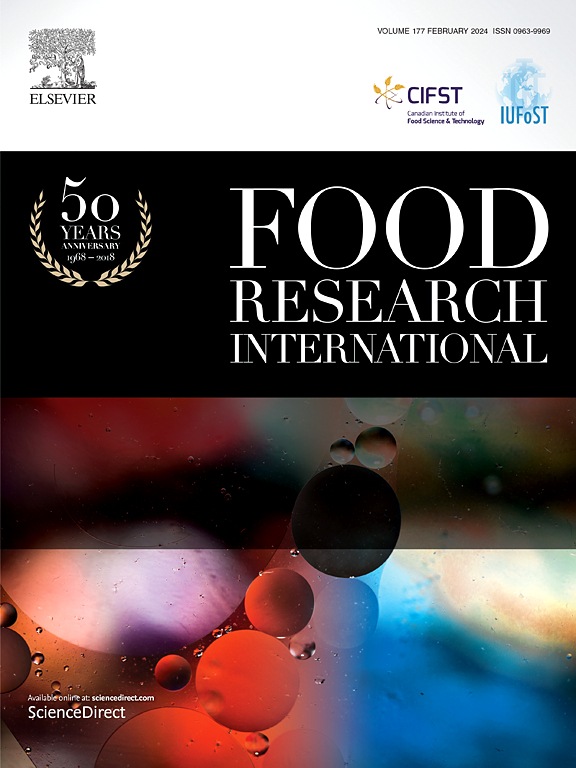Combining metabolomics and microbiomics to analyze metabolite differences and microbial contributions in different grades of oolong tea
IF 8
1区 农林科学
Q1 FOOD SCIENCE & TECHNOLOGY
引用次数: 0
Abstract
Oolong tea is a semi-fermented tea that can be classified into different grades based on flavor, aroma, and other factors. In this paper, we used a combination of metabolomics (HPLC and SPME) and microbiomics (16S rRNA) to explore the substances and microbial causes affecting the quality of oolong tea. The results showed that six taste substances such as epicatechin, and soluble sugar were significantly differentiated taste substances, 22 flavor substances such as ethylhexanol, pentenal were significantly differentiated aroma substances, and 109 microorganisms such as Paenibacillus and Haemophilus were significantly differentiated microorganisms. The content of aroma substances was more closely associated with oolong tea quality, and cis-2-pentenol, 3,5-octadien-2-one, and 2,5-dimethylpyrazine had high correlations with oolong tea tasting scores. Microorganisms such as Prevotella, Schaalia, and Niallia were positively associated with oolong tea quality. This study established the association between oolong tea quality and substances and microorganisms, which provides a feasible direction for improving oolong tea grade. By refining the processing techniques of oolong tea, such as the fine manipulation of green tea leaves, and enhancing specific microorganisms and metabolites, this study provides a reference for improving the quality of oolong tea. It also offers potential research directions for upgrading the quality of low-grade oolong tea through deep processing industries.

结合代谢组学和微生物组学分析乌龙茶不同品级的代谢物差异和微生物贡献
乌龙茶是一种半发酵茶,根据风味、香气和其他因素可以分为不同的等级。本文采用代谢组学(HPLC和SPME)和微生物组学(16S rRNA)相结合的方法,探讨影响乌龙茶品质的物质和微生物成因。结果表明,表儿茶素、可溶性糖等6种风味物质是显著分化的风味物质,乙基己醇、戊烯醛等22种风味物质是显著分化的香气物质,拟芽孢杆菌、嗜血杆菌等109种微生物是显著分化的微生物。香气物质的含量与乌龙茶品质的关系更为密切,顺-2-戊烯醇、3,5-八烯-2- 1和2,5-二甲基吡嗪与乌龙茶品尝分数的相关性较高。普雷沃氏菌、沙氏菌和nialia菌等微生物与乌龙茶品质呈正相关。本研究建立了乌龙茶品质与物质和微生物的关系,为提高乌龙茶的品级提供了可行的方向。本研究通过对乌龙茶的加工工艺进行细化,如对绿茶进行精细处理,增加特定的微生物和代谢物,为提高乌龙茶的品质提供参考。为通过深加工产业提升低档乌龙茶品质提供了潜在的研究方向。
本文章由计算机程序翻译,如有差异,请以英文原文为准。
求助全文
约1分钟内获得全文
求助全文
来源期刊

Food Research International
工程技术-食品科技
CiteScore
12.50
自引率
7.40%
发文量
1183
审稿时长
79 days
期刊介绍:
Food Research International serves as a rapid dissemination platform for significant and impactful research in food science, technology, engineering, and nutrition. The journal focuses on publishing novel, high-quality, and high-impact review papers, original research papers, and letters to the editors across various disciplines in the science and technology of food. Additionally, it follows a policy of publishing special issues on topical and emergent subjects in food research or related areas. Selected, peer-reviewed papers from scientific meetings, workshops, and conferences on the science, technology, and engineering of foods are also featured in special issues.
 求助内容:
求助内容: 应助结果提醒方式:
应助结果提醒方式:


